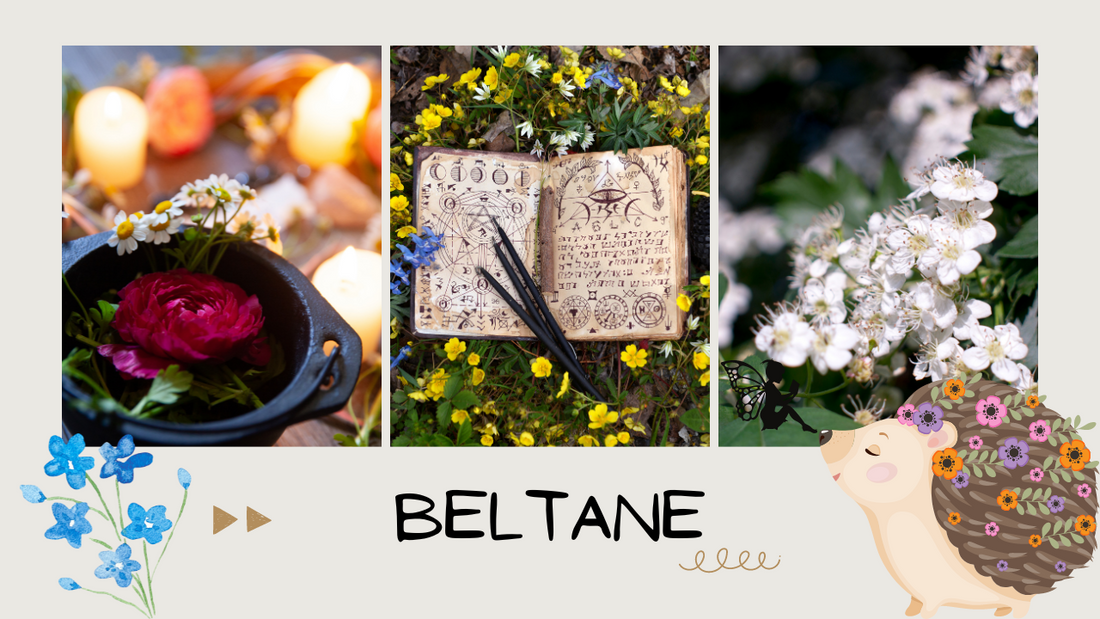
Celebrating Beltane: A Journey Through Time and Tradition
Share
As springtime blooms and nature awakens from its winter slumber, many cultures and traditions worldwide celebrate May Day, invoking the joy and vitality of the season. For the Celtic people, this yearly rite of passage is called Beltane (or Beltainn in Scottish Gaelic), a time of honoring the wildness and fertility of the earth while welcoming the coming summer months. In this blog post, we'll explore the history, mythology, and traditions around Beltane, as well as how this ancient holiday still resonates with contemporary celebrations and sustainable farming practices. Whether you're a seasoned pagan, a curious history buff, or simply a lover of nature's bounty, Beltane has something for everyone!
The origins of Beltane can be traced back to the pagan culture of the ancient Celts, who lived throughout what is now Ireland, Scotland, and Wales. Beltane (meaning "bright fire") was traditionally celebrated on May 1st, marking the halfway point between the spring equinox and the summer solstice. This transition was considered a liminal time when the veils between the worlds were thin and magic was in the air. It was believed that on Beltane eve, the Queen of the Faeries, along with a host of other mystical beings, would emerge from the hills and bless the land with fertility and abundance.
One of the key aspects of Beltane is the lighting of bonfires, which symbolize the purification and renewal of the land. Communities would gather around huge fires and leap over the flames as a way of purging themselves of old energies and welcoming in new blessings. This sacred fire was also used to bless cattle and other livestock, which were believed to be particularly susceptible to diseases and ill luck at this time of year. The Beltane fires were often kindled on top of high hills (such as Edinburgh's Calton Hill) so that their flames could be seen from miles around, signifying the connection between the human and the natural worlds.
Another important aspect of Beltane is the honoring of the deities associated with the season and the earth's abundance. The god and goddess of fertility are particular favorites during this time, with the horned god (also known as Cernunnos) representing the masculine generative power and the goddess (such as Brigid or Eostre) embodying the feminine nurturing force. This balance between the yin and yang, the light and dark, is a central tenet of Beltane and a reminder of the interdependence of all life. Many traditional Beltane rituals involve planting seeds, making floral wreaths or garlands, and offering prayers of gratitude for the land and its gifts.
While Beltane has its roots in ancient pagan culture, the spirit of the holiday continues to resonate with many modern communities and movements. For instance, sustainable farming and permaculture are increasingly popular as ways to honor the land and live more harmoniously with nature. By planting heirloom seeds, rotating crops, and practicing regenerative agriculture techniques, small-scale farmers and gardeners are helping to preserve biodiversity and protect the earth's delicate ecosystems. Beltane offers a chance to reconnect with these primal, elemental forces and remember that we are all part of a larger web of life.
In conclusion, Beltane is a timeless celebration of the beauty and power of nature, and a reminder of our own deep roots in the earth. Whether you choose to light a bonfire, dance around a maypole, or commune with the seasonal deities, Beltane can be a source of joy, inspiration, and spiritual nourishment for all who seek it. By honoring the cycles of life and the need for balance and harmony, we can deepen our respect for the environment and ultimately create a better world for ourselves and future generations. So let us embrace the energy and vitality of Beltane, and celebrate all that this magical season has to offer!